Noah’s Ark

And God saw that the wickedness of man was great in the earth […] And it repented the Lord that he had made man on the earth, and it grieved him at his heart. And the Lord said, I will destroy man whom I have created from the face of the earth; both man, and beast, and the creeping thing, and the fowls of the air; for it repenteth me that I have made them
Dozens of religious texts around the globe dating to ancient times tell of a “Great Flood” brought from the heavens, with only those selected by the divine spared to replenish the Earth. The story of Noah is among the most well-known in the Western world. Chosen by God to collect two of every animal, Noah and his family were said to build and board a floating Ark, surviving forty days and forty nights of rain before receding water set the ark down among the mountains of Ararat.
You might think of “Noah’s Ark” as a theological Atlantis: understood by some as a mere allegory or myth, pursued by others like a treasure whose discovery will yield riches beyond measure. Of course, the latter set need not look too far, given that dozens of Arks have been found atop as many Mount Ararats across the United States, Great Britain, and Australia!
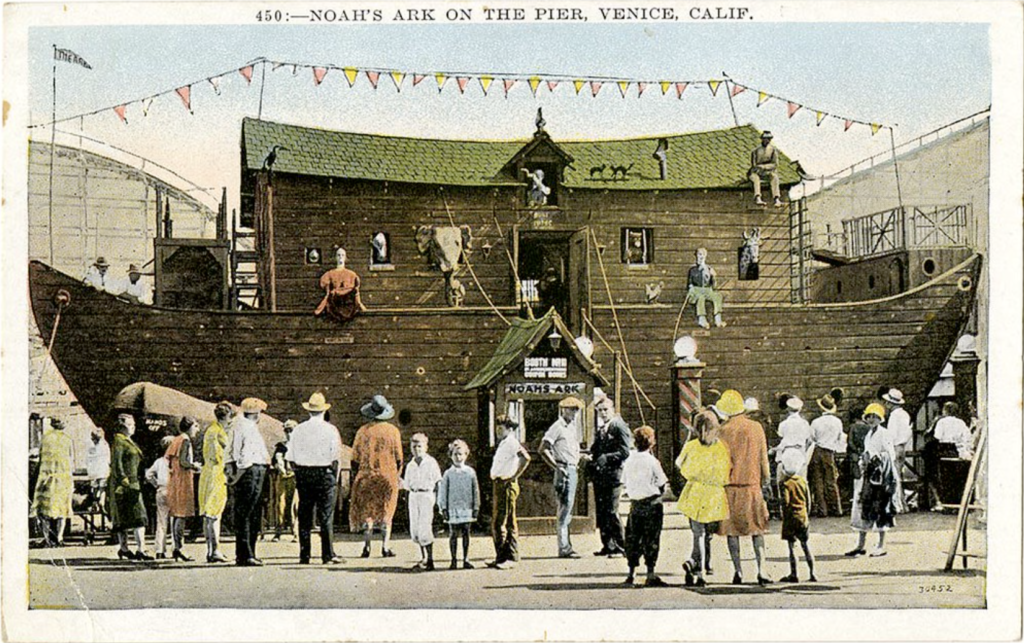
The first “Noah’s Ark” opened in 1919 at Venice Pier in California. Inside the curiously beached boat, guests would pass through a maze populated by not only traditional “funhouse” gags like rocking floors and wacky mirrors, but by simple, static vignettes stylized after Noah, his family, and sculpted animals on board. Designed by Leroy Ramond, the uniquely-themed walkthrough funhouse was a hit.
In 1920, Ramond sold the rights to build further Arks to William Dentzel (of the Dentzel Carousel Company), which sold and constructed Arks across the world. In fact, “Noah’s Arks” became the funhouse-du-jour for amusement parks in the ensuing decades. According to Joel Styler at Laff in the Dark, when Dentzel passed away in 1928, the Carousel Company was purchased by the Philadelphia Toboggan Company (a well-known roller coaster manufacturer to this day), who was able to sell the model on an even wider scale, with each installation adding new features and foibles.
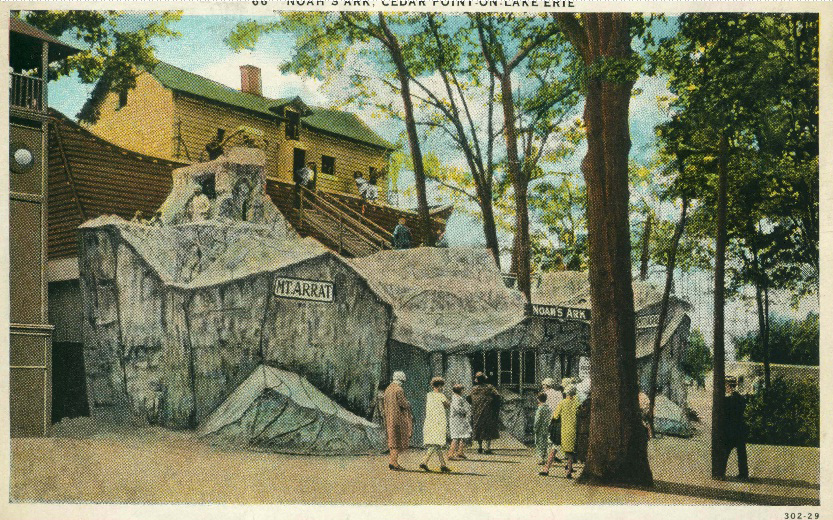
During the 1920s and ’30s, Noah’s Arks spread around the country! Nearly three dozen versions of the attraction were known to have existed, from New York’s Coney Island to Maine’s Old Orchard Beach; Cedar Point in Ohio to Frontierland and Blackpool Pleasure Beach in the UK.
Typically set in a pool of water (with access to the Ark via floating platforms) or atop a carved “Mount Ararat” (with ascending tunnels, bridges, ramps, and staircases to the ship itself), Noah’s Arks were about as synonymous with amusement parks as Ferris wheels or bumper cars! And why not? These unusual, attractive, and iconic funhouses would be instant draws for crowds, eager to climb aboard and discover what could lie inside…
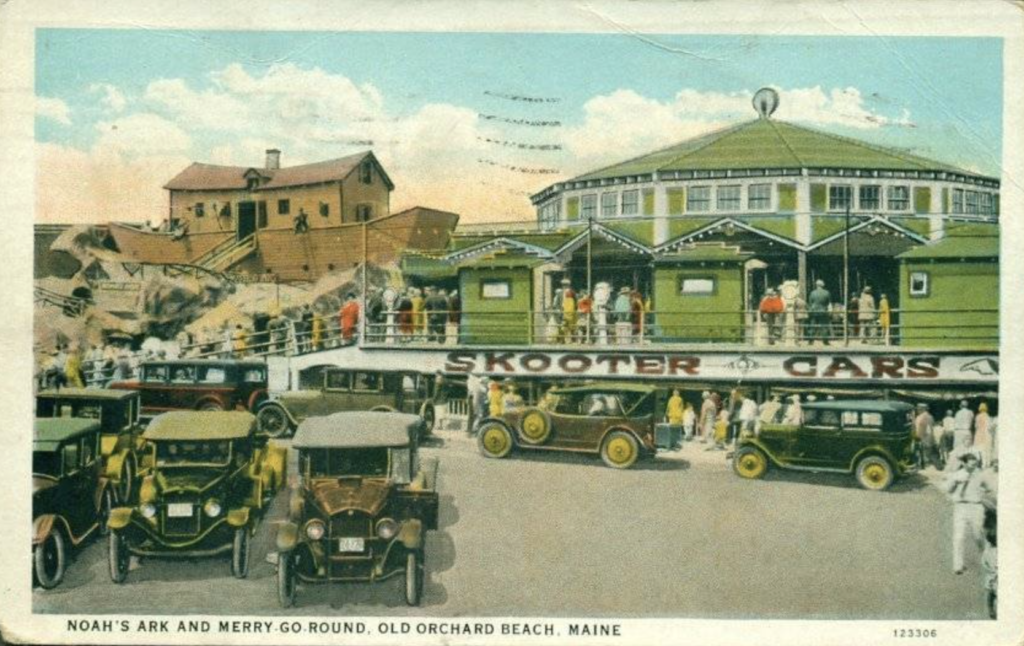
By the 1950s the “Age of the Funhouse” had more or less come to an end. Walkthroughs required frequent reinvestment and fresh gags to keep audiences coming back – a financial commitment that many local, family-owned parks simply couldn’t endure. Then there’s the archnemesis of classic amusements: fire. Old, wooden attractions of maze-like interiors wired with antique electricity occasionally turned to tinder.
Even when walkthroughs survived, many of the parks that housed them didn’t. As hundreds of such “trolley parks” flickered out of existence in the latter half of the 20th century, innumerable classic funhouses did, too. Like far too many early 1900s amusements, one-by-one, Noah’s Arks sunk.
Today, just one is left… And you might say that its story is one of ups and downs…
The Flood
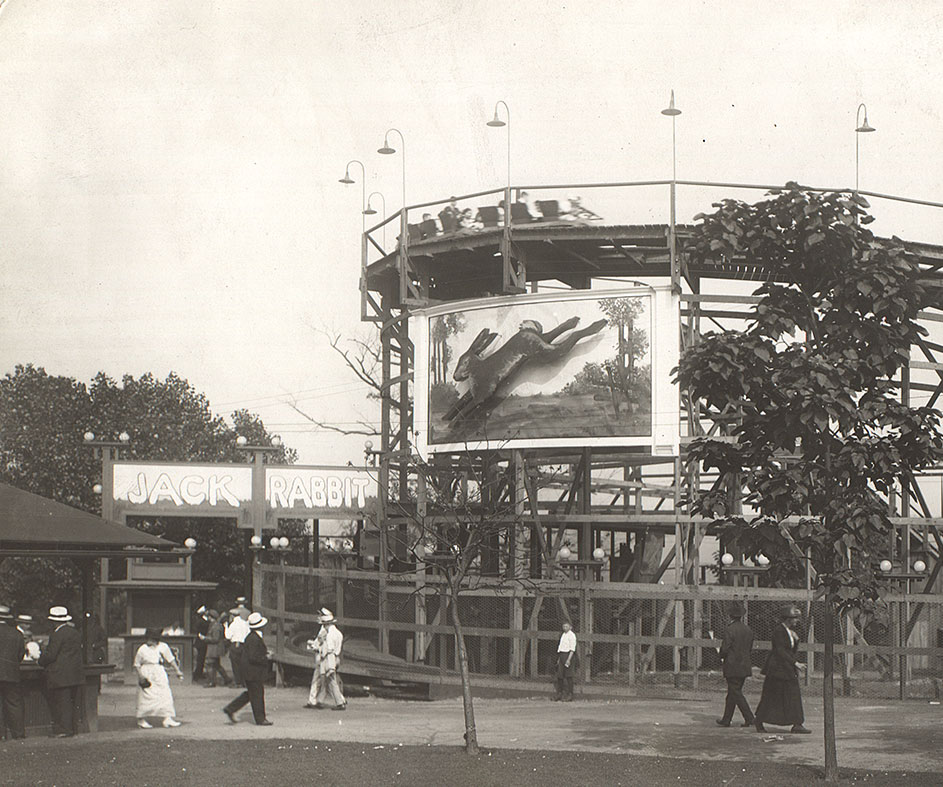
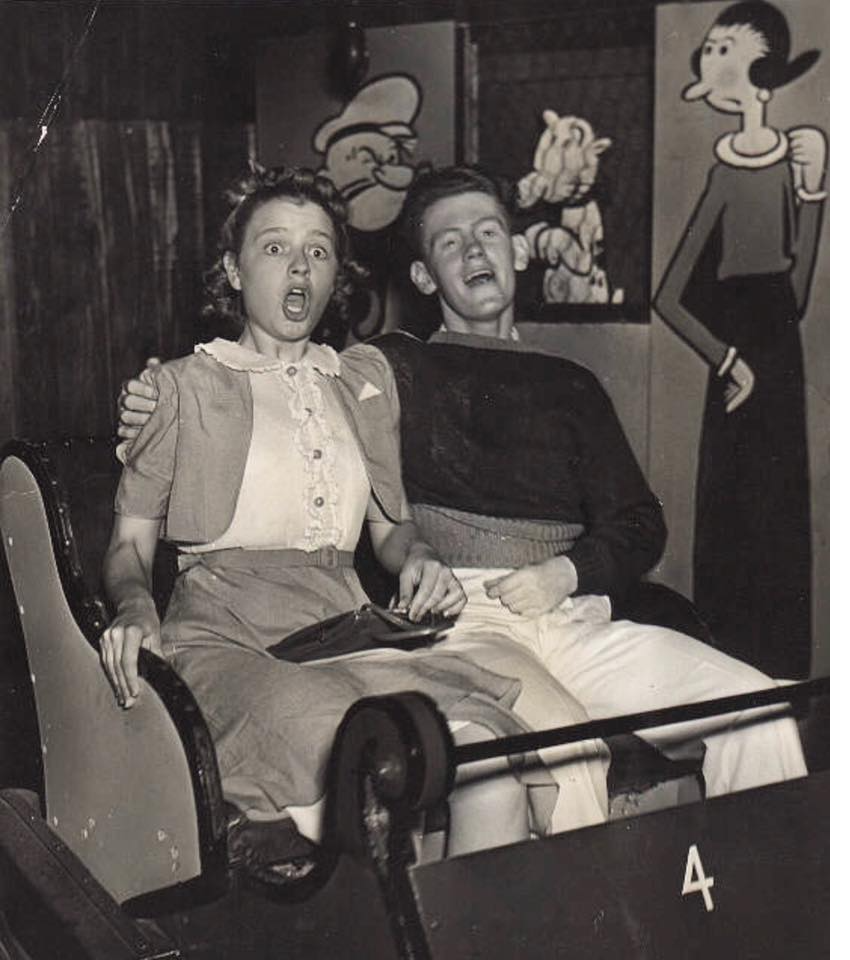
Back in Pittsburg, Kennywood had certainly become a more modern park of amusements and thrills over the course of its first two decades! The opening of a number of historic John Miller coasters – 1920’s Jack Rabbit, 1924’s Pippin (now Thunderbolt), and 1927’s mobius Racer – had made the park look more like its modern self. So had 1930’s Laff in the Dark – a classic, twisting dark ride through the “funnies” built in an enclosed bumper car shed (left). (The Old Mill, you’ll remember, was already thirty years old by that point!)
As the story goes, plans to add a Noah’s Ark to the park at the height of the funhouse’s 1920s & ’30s popularity had been a foregone conclusion… until the 1929 Wall Street Crash and the ensuing Great Depression slowed the park’s plans. In retrospect, it’s probably for the best. Frankly, the Ark wasn’t as needed then as it soon would be…
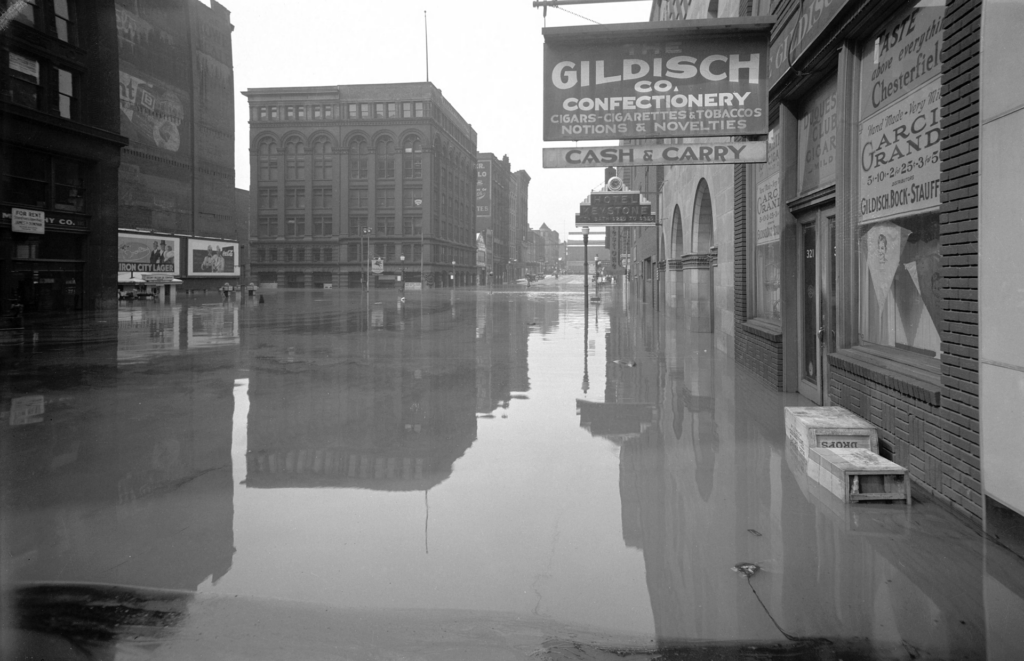
On March 17 and 18th of 1936, a catastrophic flood swept through all of Pittsburg. Over the course of the two days, the “Great St. Patrick’s Day Flood” saw water levels swell to 49 feet – nearly double the 25 feet that would indicate flood conditions.
Over 100,000 buildings were destroyed. Damage to the city’s riverside steel mills left 60,000 citizens out of work. Pittsburgh was without power for 8 days, and 69 people were reported dead from the catastrophe. Kennywood’s own lagoon rowboats were repurposed by authorities to save citizens from flooded homes or residences washed away in the swell.
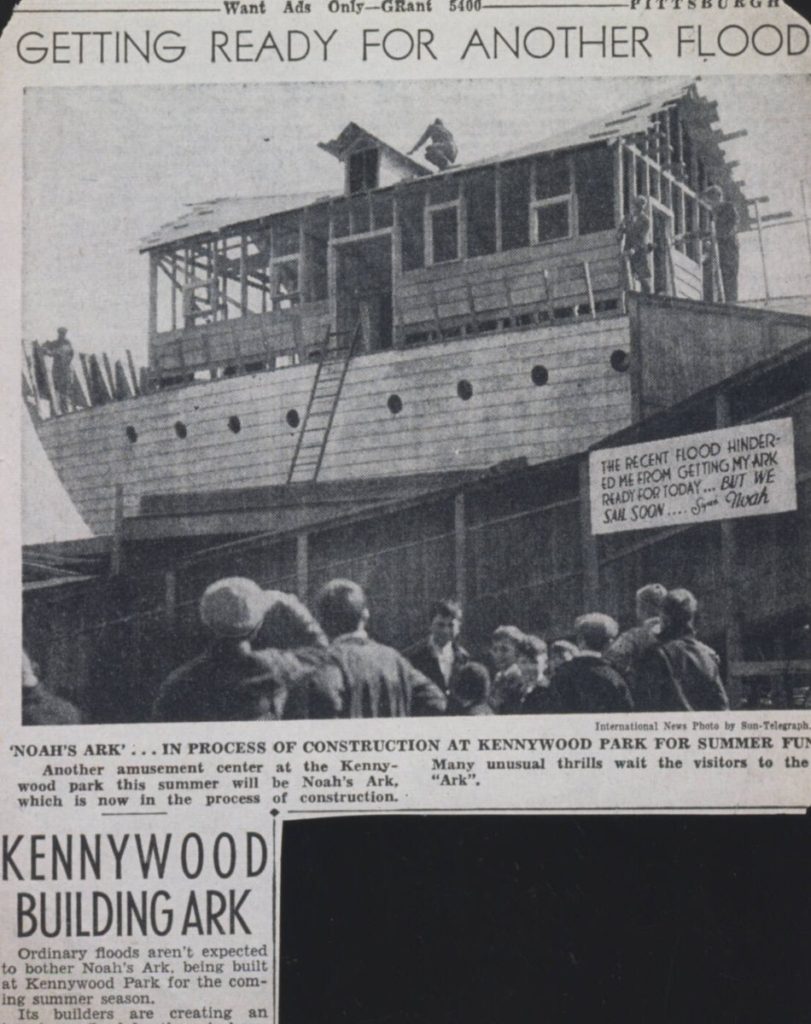
Aside from the irony of a devestating flood delaying the construction of Kennywood’s biblical Ark (“The recent flood hindered me from getting my ark ready for today, but we shall sail soon!” said a construction sign), it’s easy to imagine that Kennywood and its funhouse were a rare respite for the weary Pittsburghers whose lives had been upended that spring… Perhaps moreso than ever, once the flood waters receded into the Three Rivers, Noah’s Ark was needed.
Finally, in the summer of 1936 – and at a total cost of $20,000 (the equivalent of about $400,000 today) – Kennywood became home to the last-known Ark to be constructed, and certainly the final Philadelphia Toboggan Company version of the attraction.
Noah’s Ark (1936 / 1969)
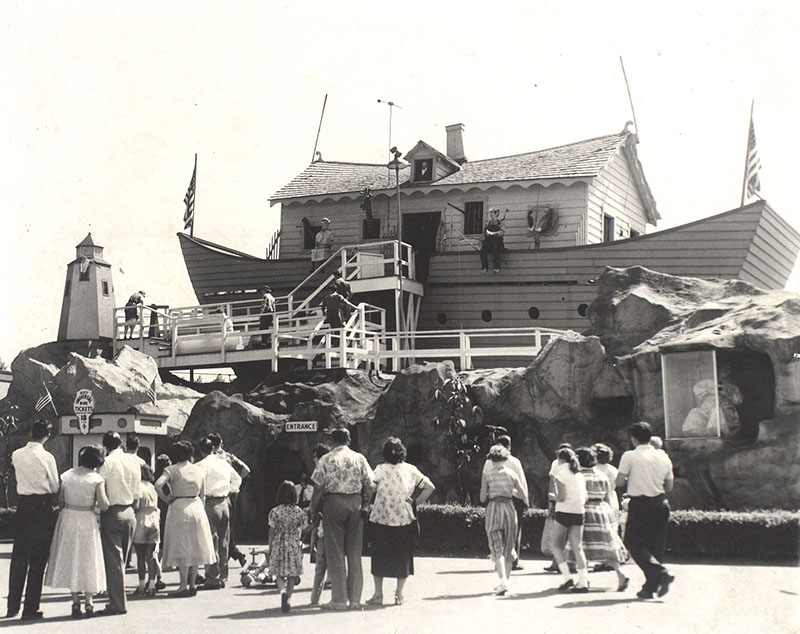
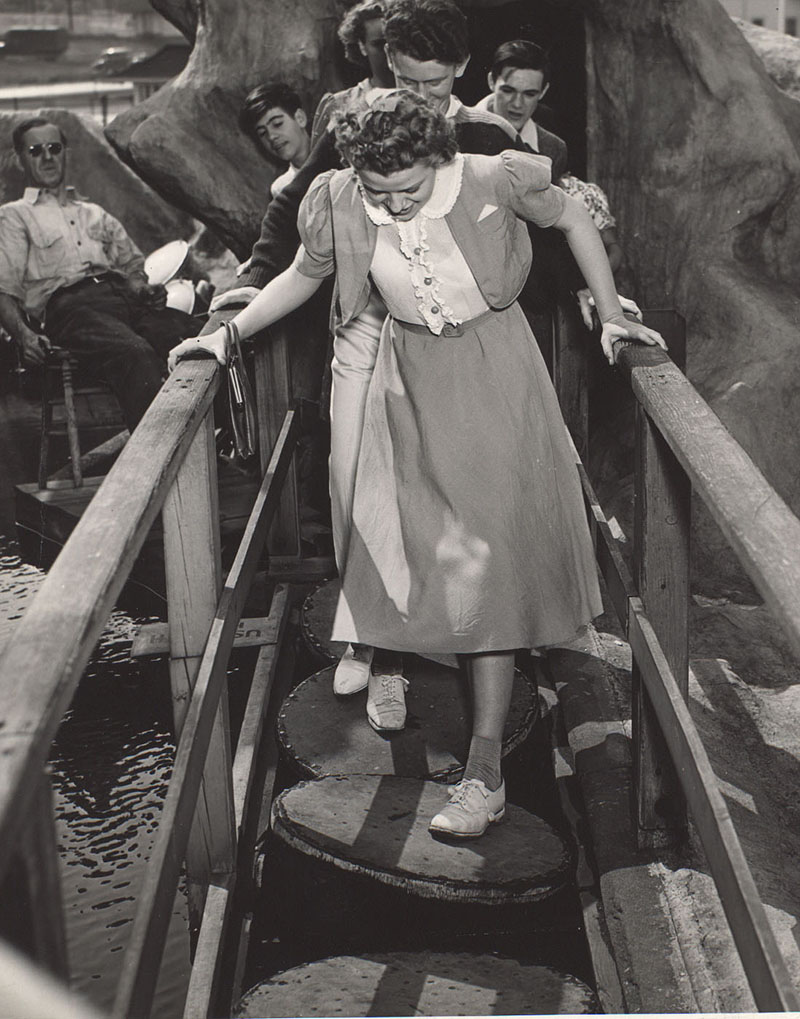
While climbing through the rocky base of Mount Ararat and along steps and boardwalks leading to the shipwrecked Ark, guests would encounter their first of its many gags. Hidden air hoses slyly activated by attendants would blast streams of air upward when crossed by young ladies, sending their skirts flying (and delighting crowds who gathered below to catch a glimpse).
To reach the ark itself, guests would need to navigate “wobbling lilly pads” across a pool of water on the mountainside. Stepping across those anchored, floating platforms that would leave visitors young and old slipping into the ankle-deep reservoir there. Knocking floors, sirens, and surprise airhorns would likewise startle guests, leaving spectators in stitches.
But perhaps that attraction’s greatest gag was the ship itself… The entire Ark was built atop a rocking mechanism, like a pendulum swinging deep in the mountainous base. Guests standing atop the stairs at the ship’s threshold would hop aboard as it bobbed on invisible waves, navigating through the ship’s interior as it alternatively raised and lowered.
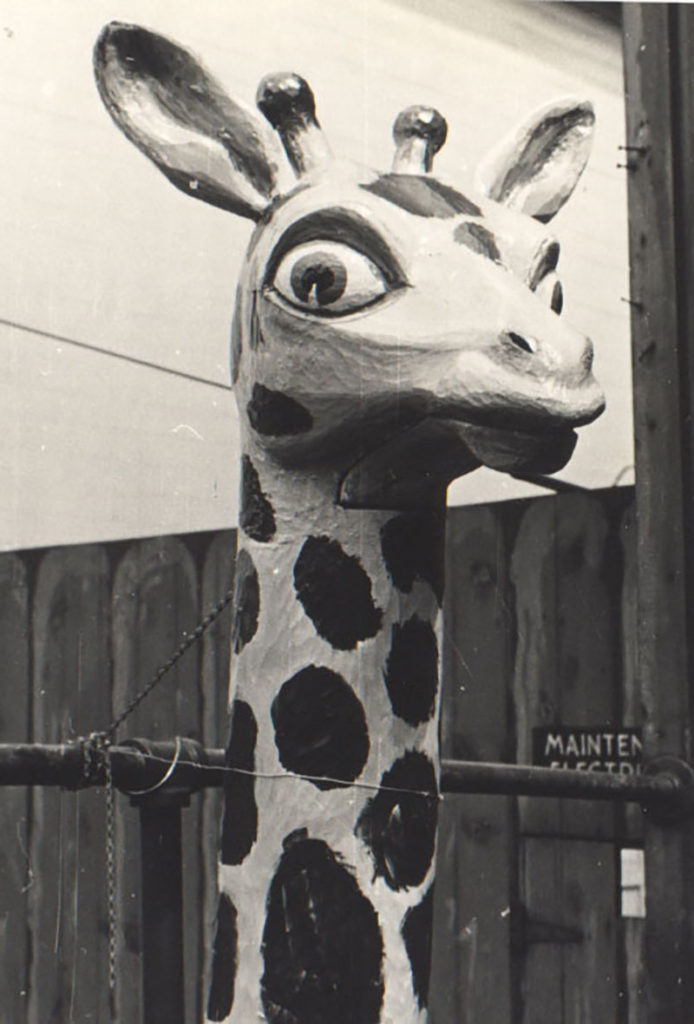
On its upper decks, they’d pass animals hand-carved by cartoon scenes and motion-based funhouse gags (like a tower of “falling barrels,” loudly toppling toward startled guests with each rock of the ship) before descending down dark, narrow stairs that likewise leaned forward and back with the ship’s movement. Even once deep inside the “mountain” structure itself, guests would find themselves in a maze of vibrating floors, rumbling walkways, and oscillating path panels filled with ghostly figures and skeletons.
Characteristic of any classic attraction that’s seen the better part of a century, Noah’s Ark changed in the context of the world around it! According to the LA Times, for example, during World War II the tilting ship would cause a coffin to fall open over guests’ heads, containing the crudely-crafted corpse of Adolf Hitler; in the 1950s, a TV antenna was added atop the ark – apparently even Noah had fallen for the new fad of television – and in 1960s, a parade of animals including the Peanuts’ Snoopy ringed around the Ark on a motorized track.
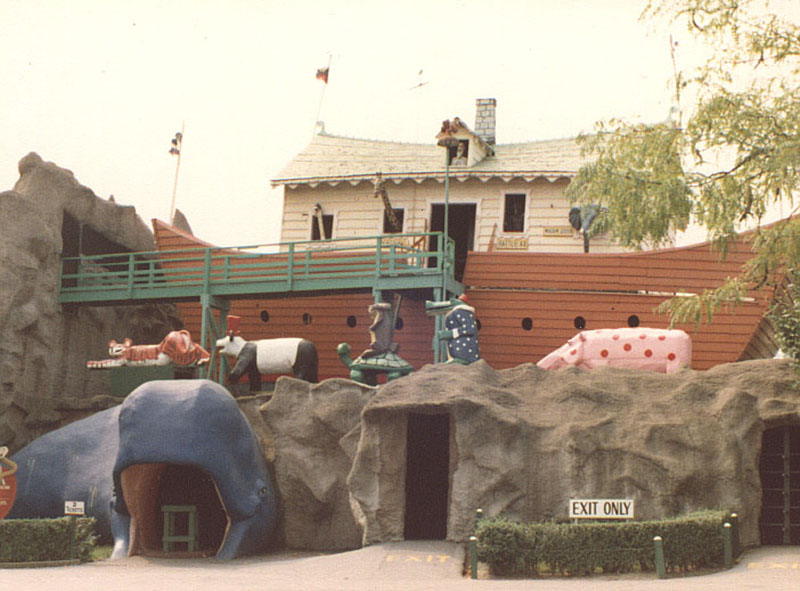
By far the Ark’s most iconic makeover took place in 1969. As part of a major reconstruction effort, the path to the Ark was rerouted, the gags reimagined, and Noah’s collection of creatures gained its most fabled occupant: a full-sized blue whale whose famously squishy tongue served as the attraction’s entry. (Okay, that’s more Jonah than Noah, but who’s counting?)
For the millions of guests who stepped aboard Noah’s Ark after 1969, this perfect encapsulation of mid-century fun had given a classic attraction new life. With its trippy blacklight, age-old gags, see-sawing floorboards, and that big, beautiful blue whale spouting mist as its entry, this was the Noah’s Ark known and loved for generations.
It must’ve seemed to guests of the ’70s and ’80s that even as other parks’ Arks disappeared one-by-one, Kennywood’s dedication to history and its love-letter-to-the-classics ride lineup would mean that Pittsburgh’s Ark would sail on for decades. And that perfect, mid-century reimagining of a classic funhouse did… Until…


